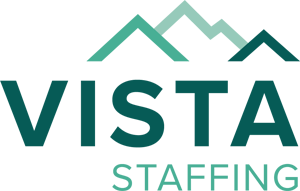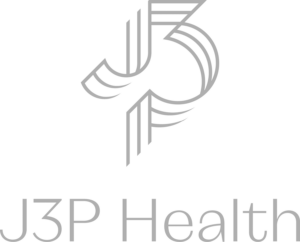A recent article in Circulation, published online ahead of print, addressed a retrospective cohort study using data from the STS/ACC TVT Registry which concluded that significant differences in the quality of TAVR care exists, particularly, variations in mortality and major complications after TAVR procedures in the United States (Desai et al, 2021). The study also revealed that a portion of sites provided care that is below the average level of performance, but acknowledged further research is needed to determine structural, process-related, and technical factors that are associated with high and low performing sites (Desai et al, 2021).
In Corazon’s experience, a TAVR program whose outcomes show below average levels of performance, should have an in-depth quality assessment that will identify gaps and opportunities to optimize clinical care and enhance quality. A broad range of strategies should be designed to optimize all aspects of the TAVR program which are intended to not only improve the quality of care, but to also improve efficiencies and reduce costs. This starts with a careful review of the existing program, to the initial screening assessment process, to post procedure care, and discharge planning. Developed strategies should be targeted at improvements directed at minimizing complications, managing LOS, improving clinical efficiencies, improving the patient experience and quality of care, and decreasing readmissions. The avoidance of complications and readmissions are key to the viability of a TAVR program and to the maintenance of clinical excellence.
Pre-Procedure
Optimization efforts, pre-procedure, should include standardization and an improved, streamlined screening process. A thorough pre-procedural workup will assist in reducing complications by implementing and applying effective risk stratification tools. The heart team approach with every patient is crucial and begins pre-procedure in the valve clinic. This multidisciplinary collaborative approach leads to optimal clinical and procedural related outcomes as it expedites a clinical review and the development of the treatment recommendations based on patient needs. By standardizing the pre-procedure workup to assess baseline functional status, which should include a summary on each patient including pertinent medical history, Society of Thoracic Surgeons (STS) risk score, and diagnostic imaging findings, the valve clinic will function more efficiently in determining appropriate candidates and the procedural plan. By optimizing the pre-procedure process, the patient should expect to undergo TAVR within 1 to 3 weeks after the initial visit.
Intra-Procedure
There are many strategies that can improve intra-procedure care, such as optimizing human resources, equipment standardization, and moving towards a minimalist TAVR strategy. Optimizing human resources should include ensuring the core team involved in the TAVR procedure has clearly defined roles to allow for consistent care of each patient as well as a consideration for cross-training personnel.
Intraprocedural equipment standardization should include streamlining equipment choice and selection. And as TAVR technology continues to evolve, programs should consider moving to more of a minimalist strategy. This includes preforming TAVR with conscious sedation (monitored anesthesia care (MAC) or RN-administered conscious sedation) when appropriate and using the percutaneous transfemoral vascular access and percutaneous endovascular closure devices for obtaining hemostasis. Research has shown that this strategy is associated with fewer requirements for inotropes and/or vasopressors, shorter length of post procedure stay, and shorter procedural times, with earlier patient mobilization (Barbanti, et al, 2018).
Post-Procedure Care
Post procedure pathways and protocols that contain a minimalist strategy should be developed and are the foundation to optimizing care. Pathways should not only be aimed at optimizing care but should have the goal of improving outcomes and leveraging resources. Pathways should always promote evidenced-based care through a standardized approach and safeguard against adverse events through incorporation of forecasting and surveillance tools which includes a detailed handoff and limited time in the recovery unit. Early ambulation and early discharge planning guidelines should be aimed at lower risk patients and developed to avoid stays in the intensive care unit. The objective of a pathway should be to standardize post procedure care, reduce variations in management, and be focused on clinical objectives such as the avoidance of narcotics and sedatives, early extubation and line removal, and early mobilization and ambulation. Research confirms that early and frequent mobilization will help prevent falls and is associated with less functional decline during hospitalization as well as shorter lengths of stay (Patel, et al, 2016).
Goals of TAVR post-procedure care should include:
- Personalized risk-stratified care planning
- Early mobilization and rapid return to baseline status
- Plans for next-day discharge and transition to home
To date, there is limited data on TAVR readmission rates and causes but, some research has shown a disproportionately high rate of long-term hospital readmissions for cardiac causes including heart failure (Bianco, et al, 2019). To prevent readmissions, strategies should focus on careful follow up including post discharge phone calls to identify potential issues.
Conclusion
Now more than ever, it is vital for the structural heart team to work collaboratively within the system of care to optimize patient care. Optimization, quality improvement, and cost savings can be achieved through the implementation of clinical pathways and protocols to significantly improve patient care. Individual facilities should determine which optimization strategies are right for their program and how these strategies can be customized to enhance the outcomes, quality, and experience for their patients. Optimizing patient care for TAVR should be a benefit not only to the patients, but to the program, along with comprehensive implementation of best practices.
Resources:
Bianco V, Kilic A, Gleason TG, Lee JS, Schindler J, Aranda-Michel E, Wang Y, Navid F, Kliner D, Cavalcante JL, Mulukutla SR, Sultan I. Long-term Hospital Readmissions After Surgical Vs Transcatheter Aortic Valve Replacement. Ann Thorac Surg. 2019 Oct;108(4):1146-1152. doi: 10.1016/j.athoracsur.2019.03.077. Epub 2019 Apr 27. PMID: 31039354.
Elizabeth M. Perpetua, Kimberly A. Guibone, Patricia A. Keegan, Roseanne Palmer, Martina K. Speight, Kornelija Jagnic, Joan Michaels, Rosemarie A. Nguyen, Emily S. Pickett, Dianna Ramsey, Susan J. Schnell, Shing-Chiu Wong & Mark Reisman (2021) Best Practice Recommendations for Optimizing Care in Structural Heart Programs: Planning Efficient and Resource Leveraging Systems (PEARLS), Structural Heart, 5:2, 168-179, DOI: 10.1080/24748706.2021.1877858
Marco Barbanti, Simona Gulino, Giuliano Costa & Corrado Tamburino (2018): Optimization and simplification of transcatheter aortic valve implantation therapy, Expert Review of Cardiovascular Therapy, DOI: 10.1080/14779072.2018.1449644
Nimesh D. Desai, Sean M. O’Brien , David J. Cohen , John Carroll , Sreekanth Vemulapalli , Suzanne V. Arnold , John K. Forrest , Vinod H. Thourani , Ajay J. Kirtane , Brian O’Neill , Pratik Manandhar , David M. Shahian , Vinay Badhwar , and Joseph E. Bavaria; A Composite Metric for Benchmarking Site Performance in TAVR: Results from the STS/ACC TVT Registry; Circulation doi: 10.1161/CIRCULATIONAHA.120.051456. Accessed online May 17, 2021 at: https://doi.org/10.1161/CIRCULATIONAHA.120.051456
Sandeep M. Patel, MD; J. Brandon Elmore, MD; Edwin G. Avery, MD; Marco A. Costa, MD, PhD; Alan Markowitz, MD; Angela Davis, RN; and Guilherme F. Attizzani, MD; Building an Efficient TAVR Program. November/December 2016 Supplement. Accessed online March 12, 2021 at: https://citoday.com/articles/2016-nov-dec-supplement/building-an-efficient-tavr-program

 company
company 
 (412) 364-8200
(412) 364-8200


























